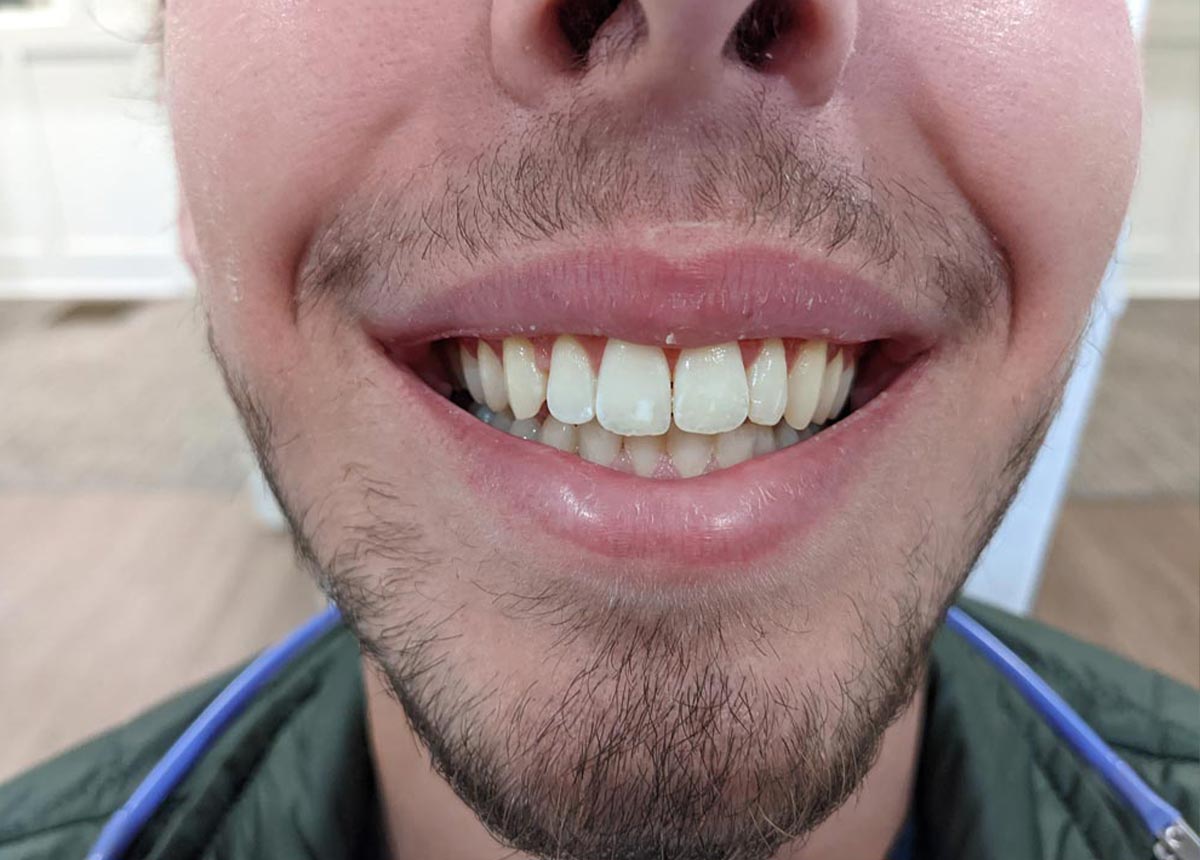Gum Grafting


Because gingival recession can cause other dental health problems, our doctors offer gum grafting at Fine Periodontics. By covering exposed tooth roots, we can protect them from cavities, sensitivity, and from becoming loose. Schedule a visit with our periodontist if you want to benefit from gum grafting in Greenville or Anderson, South Carolina.
A soft tissue graft, also called a gum graft, is a graft of gingival tissue. A gum graft may be needed to correct gingival recession or improve the appearance of an uneven gumline.
During the gum grafting procedure, our periodontist will stitch grafting tissue onto the areas of the gums that need additional tissue. Based on your particular needs and desires, the tissue graft may be taken from another area of your mouth or from a tissue bank. When using your own tissues, the graft may be taken from the roof of the mouth or the surrounding gums. Our periodontist will help you determine which type of gum graft is best suited to your individual needs. In some cases, we may also use tissue-stimulating proteins to encourage your body’s natural growth abilities and promote faster healing.
Our periodontist may recommend a soft tissue graft if you have experienced gingival recession. The gum tissues may recede if your smile is affected by periodontal disease; overaggressive brushing may also cause gum recession. When not treated with a gingival graft, gum recession may eventually lead to tooth loss due to lack of support from the gum tissues. A gum graft can also improve the appearance of your smile. To learn more about how soft tissue grafting can improve the health and beauty of your smile, we welcome you to contact our office today.
Periodontal Plastic Surgery
Cosmetic gum surgery, which is also known as gingivectomy or crown lengthening, is a simple treatment we may recommend if your appearance is affected by what is sometimes called a “gummy smile.” A gummy smile is one in which the teeth appear abnormally short because of excessive gum tissue. The gum tissue may appear too bulky, or it might look like the gums come down over your teeth too far. In most cases, a gummy smile is the result of excessive gum tissue covering teeth that are a normal length and shape. To correct this problem and give you a smile you can show off with pride, our periodontist may recommend cosmetic gum surgery. During this treatment, we will simply remove a small amount of the gum tissue, revealing more of the tooth structure and giving your smile a more aesthetic appearance. Cosmetic gum surgery usually requires just one visit to our office.
If you have a gummy smile or your gumline appears uneven or asymmetrical, cosmetic gum surgery may be a good choice for improving your appearance. Our periodontist will help you determine whether cosmetic gum surgery is right for your smile. Call us today to learn more and schedule your individual consultation!
Crown Lengthening


Crown lengthening is a gum treatment that has both functional and aesthetic purposes. We may recommend crown lengthening if your appearance is affected by what is sometimes called a “gummy smile.” A gummy smile is one in which the teeth appear abnormally short because of excessive gum tissue. The gum tissue may appear too bulky or look like it comes down over the teeth too far. In most cases, a gummy smile is the result of excessive gum tissue covering teeth that are a normal length and shape. To correct this problem and give you a smile you can show off with pride, our periodontist may suggest crown lengthening. During this treatment, we will simply remove a small amount of the gum tissue, revealing more of the tooth structure and giving your smile a more aesthetic appearance. This usually requires just one visit to our office.
We may also recommend crown lengthening to make a restorative or cosmetic dental treatment possible. If the tooth is broken below or very close to the gumline or if insufficient tooth structure is left for a restoration, our periodontist may use crown lengthening to expose more of the tooth so a restoration like a crown or bridge can be placed.
To learn more about the uses and benefits of crown lengthening, we welcome you to contact our office today.
Frenectomy
A frenulum is a small fold of tissue that connects one part of your mouth to another. In some cases, we may need to remove or modify a frenulum to improve the function and health of your smile; this type of treatment is called a frenectomy. The two most common types of frenectomy are lingual frenectomy and labial frenectomy. The lingual frenulum connects the bottom of the tongue to the floor of the mouth. If this frenulum is abnormally short or thick, it can result in a condition known as ankyloglossia, or tongue-tie. This often inhibits the patient from chewing, eating and speaking properly. To alleviate these problems, our friendly periodontist may recommend a frenectomy. A labial frenectomy is used to remove the frenulum that attaches the top lip to the gums above the front teeth. In some cases, this frenulum can cause recession of the gums, contribute to a gap between the upper front teeth or cause problems for denture wearers.